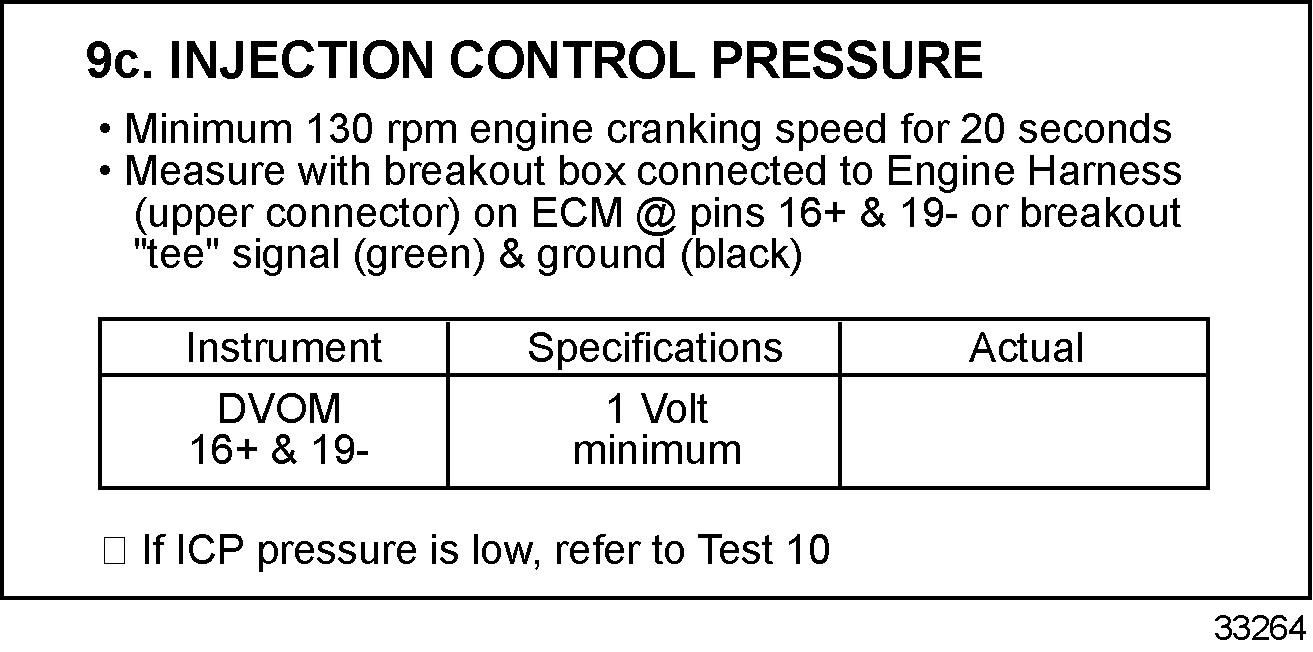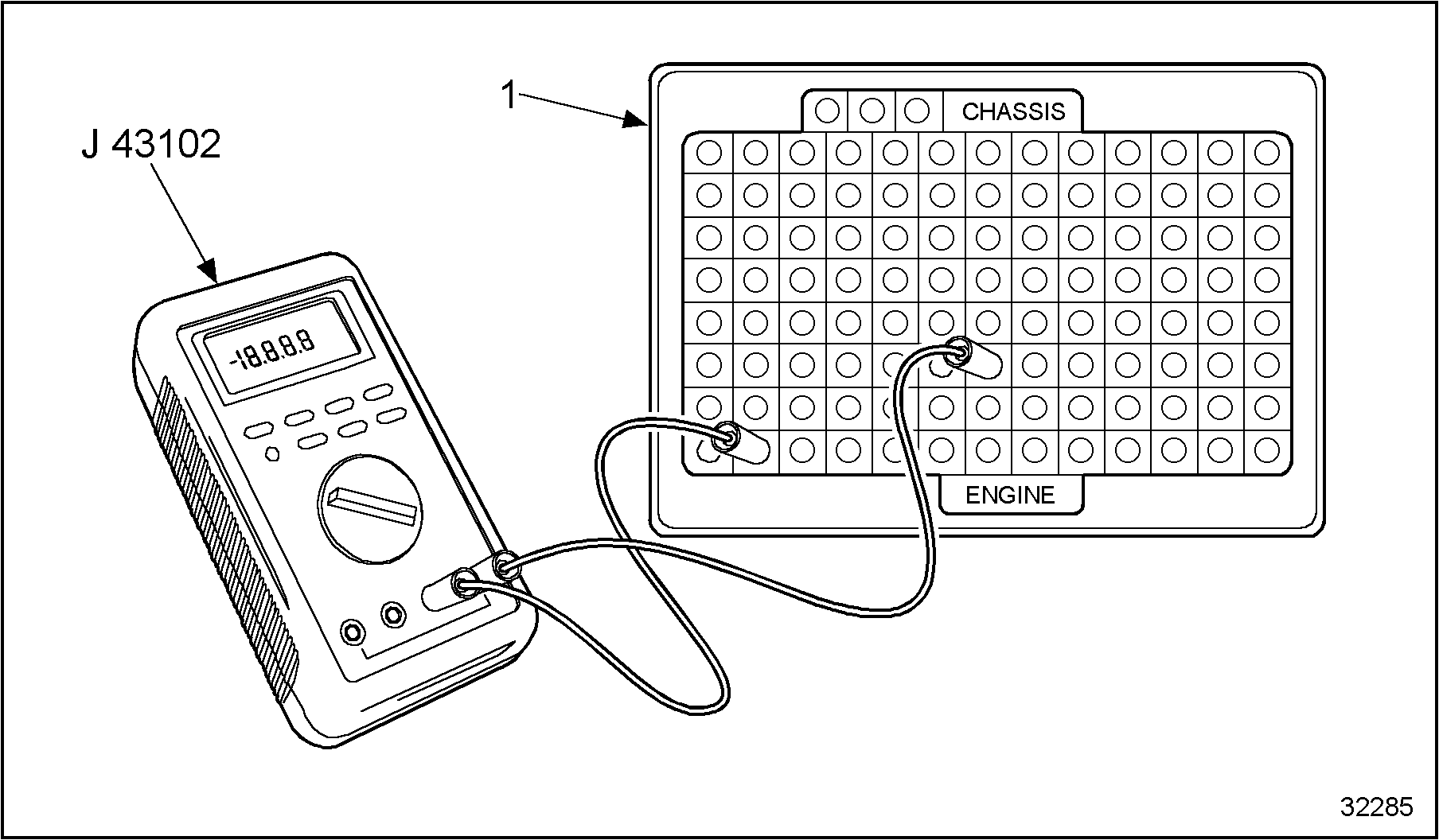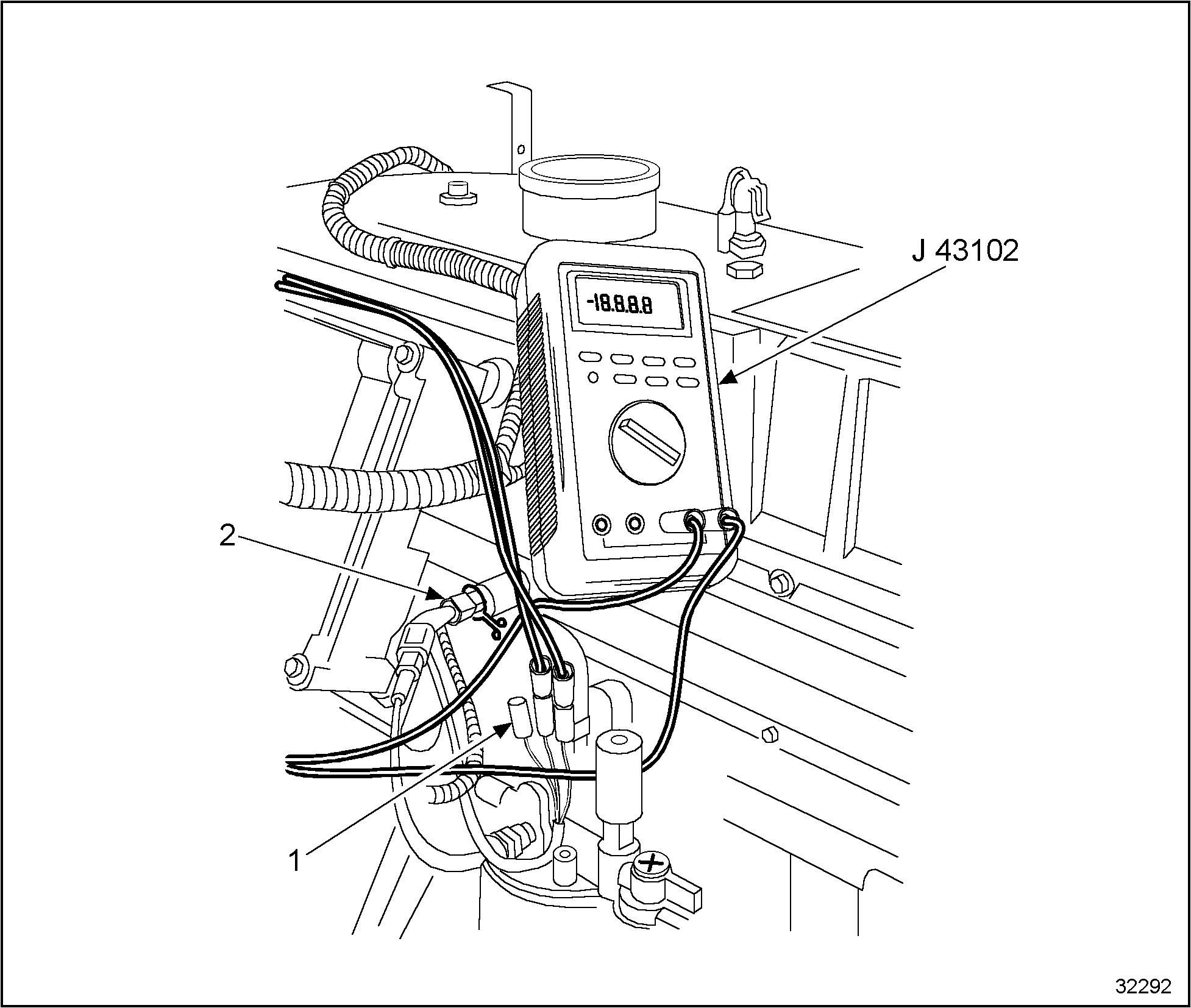
Figure 1. Diagnostic Form
The injection control pressure troubleshooting as it relates to the hard start/no start problem, follows. For a reproduction of the applicable portion of the diagnostic form, see Figure
“Diagnostic Form”
.
Section 10.14.1
Purpose
The purpose of the ICP system check is to determine if the system is supplying sufficient oil pressure to start and operate the engine. This is an alternate method to be used if the EST is unavailable or fails to function properly. Insufficient electrical power from the batteries or an electronic failure may inhibit the EST from receiving diagnostic data.
Section 10.14.2
Test Procedure
There are two methods to measure injection control pressure, with a breakout box or with a breakout T.
Section 10.14.2.1
Breakout Box Method
To measure injection control pressure using the breakout box, See Figure
“Measuring Injection Control Pressure with Breakout Box”
, and follow this procedure.

| 1. Breakout Box | |
Figure 2. Measuring Injection Control Pressure with Breakout Box
- Remove the 60–way connector engine (upper) harness from the ECM.
- Install the breakout box adaptor connector to the engine connector on the ECM. Reconnect the engine harness connector to the breakout box adaptor connector. Torque the connector to ECM to 35 lb·in.
- Connect the positive lead of the DVOM to terminal 16 and the negative lead to terminal 19.
- Crank the engine while observing the DVOM and record the injection control pressure voltage signal on the diagnostic form. If injection control pressure is low, refer to “10.15 Low Injection Control Pressure Test”, Low ICP Pressure Test.
Section 10.14.2.2
Breakout T Method
Measure the injection control pressure using a breakout T.
- Remove the engine harness connector at the ICP sensor.
- Connect the breakout T to the removed engine harness connector and the ICP sensor.
- Connect the DVOM leads (+Green, —Black) to the breakout T as shown. See Figure
“Measuring Injection Control Pressure (Voltage)”. - Crank the engine and observe the DVOM voltage reading. Record the reading on the diagnostic form. If voltage is low, check the oil level in the reservoir (at EOT sensor) again to confirm the reservoir contains a sufficient supply of oil to enable the injection control system to function properly. If the oil level is okay, proceed to the Low ICP pressure test, refer to “10.15 Low Injection Control Pressure Test”.

| 1. Breakout Tee | 2. ICP Sensor |
Figure 3. Measuring Injection Control Pressure (Voltage)
Section 10.14.3
Possible Causes
Low injection pressure (voltage) indicates the injectors are not receiving sufficient oil pressure to properly operate the fuel injectors. This may be caused by:
- No oil in the engine
- Oil reservoir leak down (possibly through high pressure pump check valve)
- Defective high pressure pump
- Injector O-ring leak
- Injector body leak
- IPR valve stuck open
- Pump drive gear loose or damaged
Section 10.14.4
Tools Required
Pro-Link 9000, J 38500–100
, or DVOM and ICP sensor Breakout T, J 43103
.
Section 10.14.5
Supplemental Diagnostics
Refer to “34 Injection Pressure Regulation System”
, for IPR diagnostics.
| Series 40E Troubleshooting Manual – 6SE241 |
| Generated on 10-13-2008 |